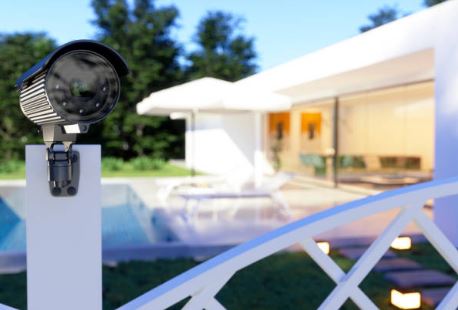What is Camera Housing? Camera Housings are the physical body of the camera that protects and contains all its inner workings. Housings are mostly made out of 2 materials: Aluminum and Polycarbonate, the latter being less expensive and thus more popular. Continue reading, you will know more about the types and how to hide in your house.
Table of Contents
What’s the Difference Between Camera Housings?
The physical part of the camera that protects and houses all of its internal components are called camera housing. There are several different kinds, and you may be curious about their various uses and scenarios. SCK is the Security Camera King, which means we know all about this stuff and can help break down exactly why you’d want these different options and what they’d be used for! check out the or continue reading the article while watching the video below!
Bullet Style Housing
Many Think of Bullet type cameras right away when someone says “CCTV” camera. In order to shield the lens from excessive glare and sunlight as well as to protect the camera from bad weather, bullet-style cameras have elongated rectangular housings. In addition to this significant factor, bullet cameras are frequently used outdoors.
The bullet’s biggest pro and biggest con both fall under this factor. By far the least covert and most obvious cameras are bullet cameras because of how distinctive they are. It’s crucial to comprehend that CCTV is not a “trap” for criminals. Nobody should want a criminal to do something bad just so they can catch them, it’s far better if no incident occurs at all. A CCTV camera serves as a deterrent when it is clearly visible. Criminals are frequently deterred from committing a crime by simply being aware that a CCTV system is present. However, they also make the most obvious targets for vandalism due to their knuckle-style mounts and high visibility. Bullet cameras are more frequently intentionally damaged or completely removed by outside, intentional, and malicious intent than any other housing style.
When mounting or positioning a camera, bullet cameras without PTZ typically have manual adjustments that give you more options than, say, domes.
Vandal Dome Housing
The design of dome cameras makes them more covert than bullet-style cameras. They can be concealed a little bit better than bullets due to their round shape. Additionally, they have tinted dome shields so that onlookers can’t tell where the lens inside is pointing. Additionally, the camera’s lens is shielded from damage by these dome housings, which are much more robust. With these kinds of cameras, proper installation techniques must be followed. Domes must be sealed, especially when installed outdoors, or moisture could enter the dome and cause foggy images or damage. Additionally, since the housing may produce glares or reflections, proper positioning in relation to the lighting of the scene must be considered.
Turret Dome Styles
The turret dome style provides a compromise between the dome and the bullet. These devices have a ball and socket setup that allows for manual adjustment, making them both resemble vandal domes more than bullets, which are round and less obvious. They do, however, have exterior shielding, which makes them slightly more vulnerable to vandalism or damage than vandals. They are still more covert than bullet cameras, and typically because of their round shape, they are more difficult to reach or access. This makes them less vulnerable to damage or vandalism.
Turret domes don’t have vandal shielding, so they don’t have moisture or glare problems in the same way that vandal domes do, which again makes them a good middle ground between the two.

Why Hide Security Cameras?
Hiding security cameras has a lot of benefits, and here are the top 3 of them you may consider:
- Hidden security cameras are less likely to be spotted and disabled by burglars;
- Wireless hidden outdoor security cameras will never destroy the aesthetics of your house, and the guests will be more comfortable;
- WiFi-hidden security cameras for the home are more efficient at eavesdropping on your nanny’s activities and gathering evidence to support your suspicions.
Many homes also use both visible and covert security cameras: the visible cameras serve as a deterrent, while the covert cameras are placed nearby to record the entire incident in the event that the visible ones are discovered and taken out of service.
Where to Hide Security Cameras?
So how do you create a covert security system without raising any eyebrows? You can do a number of things to conceal security cameras both inside and outside (check the example pictures first and get a detailed explanation later.
- Bookshelves.
- Smoke detectors.
- Desk plants.
- Tissue boxes.
- Stuffed teddy bears.
- Fake rocks.
- fake hanging plant in a pot.
Is It Legal to Hide Security Cameras Or Use a Hidden Security Camera?
Generally speaking, you can use a hidden camera to record videos inside and outside of your home. But avoid recording in places like the bathroom where people might reasonably expect their privacy.
A lawyer should be consulted before concealing a security camera to discuss the precise purposes for which you intend to use it and the locations where you want to put it.
Camera Housings are the physical body of the camera that protects and contains all its inner workings. Generally speaking, you can use a hidden camera to record videos inside and outside of your home. Housings are mostly made out of 2 materials: Aluminum and Polycarbonate. Do you need camera housing, and know more about camera housing?


